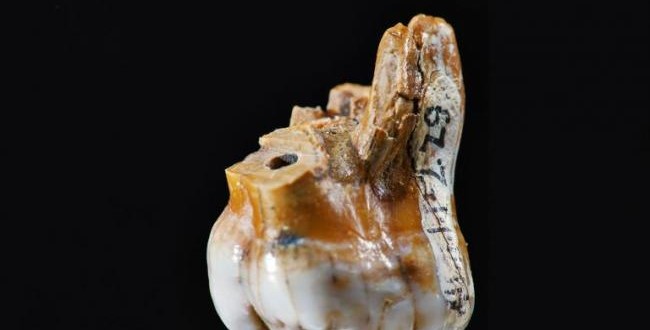DNA extracted from a fossilized tooth, confirmed the presence of one of our elusive ancient cousins only recently discovered, the Denisovians.
An obscure branch of the human tree of evolution survived for thousands of years in a remote mountain range in Siberia – and even though it eventually died out, left genetic traces within living Homo sapiens, according to a new study.
Denisovans were discovered in 2010, with a single finger bone in a cave in the Altai Mountains. The genetic information was similar to Neanderthal, but was different enough from both them and modern humans to warrant the naming of a distinct species.
Now two teeth found in the same region of the heart of Asia indicates that the Denisovans were not a fleeting populace – they survived the harsh climate of southern Siberia for thousands of years, and left their mark within modern humans, according to a new study in The Proceedings of the National Academy of Sciences.
“The (mitochondrial DNA) of (the tooth) is more diverged and has accumulated fewer substitutions than the (mitochondrial DNA genomes) of the other two specimens, suggesting Denisovans were present in the region over an extended period,” write the authors. “Analysis of the Denisovan genome showed that Denisovans have contributed on the order of five percent of the DNA to the genomes of present-day people in Oceania, and about 0.2 percent to the genomes of Native Americans and mainland Asians.”
But this was a group that survived tens of thousands of years on its own, and distinct from other hominids. Their DNA shows more diversity and variation over time than Neanderthals. The finger bone initially discovered in 2010 showed that Denisovans and Neanderthals split from each other genetically four times further back in time than Neanderthals split from modern humans, they said.
The new teeth analysis pushed back Denisovan history in the area by another 60,000 years – to roughly 100,000 years ago. That means Denisovans likely survived in the inhospitable caves of the Altai Mountain region for millennia – potentially under threat from their cousins.
“The difference in age between the two Denisovan molars, as well as their similar morphology, suggests Denisovans were present in the area at least twice, and possibly over a long time, perhaps interrupted by Neanderthal occupation of occupations,” concluded the authors. “Denisovans may therefore have been present in southern Siberia over an extended period.”
Although the teeth are bigger than Neanderthals and ours, the research team from the Max Planck Institution for Evolutionary Anthropology and the University of Toronto did not speculate further on physical structure of the species.
Previous studies have linked some modern human traits to our extinct cousins. A gene inherited from Denisovans thousands of years ago has given Tibetan an evolutionary advantage in low-oxygen and high-altitude part of the Himalayas, according to a DNA study published last year in the journal Nature.
Agencies/Canadajournal
 Canada Journal – News of the World Articles and videos to bring you the biggest Canadian news stories from across the country every day
Canada Journal – News of the World Articles and videos to bring you the biggest Canadian news stories from across the country every day



